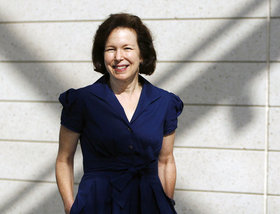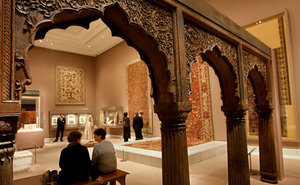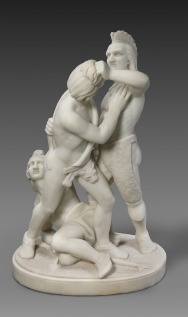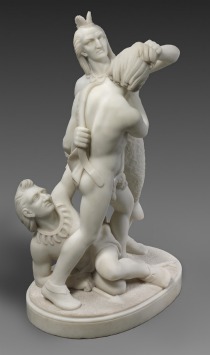I got scooped! I’ve been gathering string, as we say in the journalism business, to write about the search for a director at the Museum of Fine Arts in Houston. And I’d heard from one very good source that it was down to two, with names attached.
 But I had not yet found a second source — and today’s Houston Chronicle beat me to it.
But I had not yet found a second source — and today’s Houston Chronicle beat me to it.
Gary Tinterow, chairman of the 19th-century, modern and contemporary art department at the Metropolitan Museum, and Kimerly Rorschach (at ledt), director of the Nasher Museum of Art at Duke University in Durham, N.C. are the two finalists.
As the Chronicle notes, both have Houston roots — having grown up there — and both went to Brandeis University, where they are both on the advisory committee advising the search for a new director for the Rose.
But they have different experiences, as the Chronicle outlines.
Tinterow has a higher profile in some circles — here’s a link to a “day in his life” — and Rorschach has much more executive experience, but at small university museums. This piece on her in the Charlotte News &Observer gives a good feel for her personality. With MFAH planning a new building, her expertise in the Nasher construction could prove useful. Tinterow has deeper connections to the curatorial world — and could be expected to use them to borrow big pieces for exhibitions, assuming there’s a budget for them. On the other hand, he’s not known as a good fundraiser, but others dispute that. Someone close to Tinterow strongly dsiagreed, and pointed to several successes, including the money he raised to purchase van Gogh’s Wheatfield with Cypresses.
I could argue this either way. The search committee has a very fundamental decision to make.
Photo Credit: Courtesy of the News & Observer


 Adding to the attraction, the piece is a “rediscovery.” It had been in the collection of a Massachusetts family since the 1950s, the museum said, and “remained unknown to the art world until it surfaced late last year.” And:
Adding to the attraction, the piece is a “rediscovery.” It had been in the collection of a Massachusetts family since the 1950s, the museum said, and “remained unknown to the art world until it surfaced late last year.” And: Indian Combat depicts three Native American men engaged in spirited–yet graceful and balletic–combat with each other. Very few examples of neoclassical sculpture feature more than two figures, and virtually no other work exhibits such a complex integration of multiple protagonists. Conceived fully in the round, Indian Combat’s dynamic composition encourages the viewer to circumnavigate the piece in order to discover the details of the action. Having carved the marble herself–without the use of assistants that was the custom at the time–Lewis rendered a wide variety of complex textures, which can be seen in the moccasins, animal hides and loin cloths worn by the figures.
Indian Combat depicts three Native American men engaged in spirited–yet graceful and balletic–combat with each other. Very few examples of neoclassical sculpture feature more than two figures, and virtually no other work exhibits such a complex integration of multiple protagonists. Conceived fully in the round, Indian Combat’s dynamic composition encourages the viewer to circumnavigate the piece in order to discover the details of the action. Having carved the marble herself–without the use of assistants that was the custom at the time–Lewis rendered a wide variety of complex textures, which can be seen in the moccasins, animal hides and loin cloths worn by the figures.